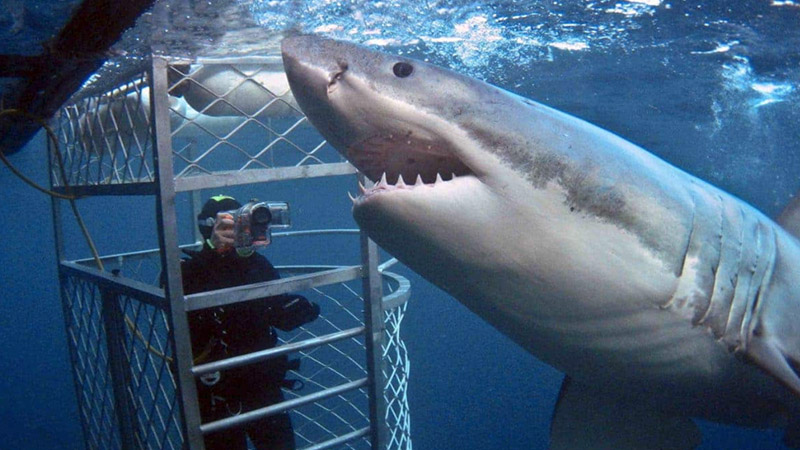
My first encounter with Great White Sharks
“Save the fin!” we said with our hands on our heads, pointed upward. Richard, our bubbly White Shark Africa guide, took a group photo before we packed into the small yacht in the Mossel Bay harbour that took us Great White shark cage diving.
I was on the top deck with a splendid sea view of Mossel Bay, a decision I would come to regret when seasickness hit me at the same time as the stench of chum at Seal Island.
My nausea temporarily abandoned me when I saw two Great Whites cruising around our little yacht, both about 4 meters long. They were magnificent. Richard told us to put our goggles and wetsuits on. I was the first one in the cage, unsure of where to put my feet. Richard had explained safety rules earlier but my sea illness must have drowned out his words. I was the first one in the cage, my first time on such an experience, and alone in the water. That’s until some Italian-speaking tourists descended into the cage who looked like they’d done this before. I used their body placements as a reference.
“Down, down!” Richard shouted whenever he saw sharks near us. The first few “downs” were disappointing underwater sightings. More like shadows of big creatures in the distance. With time, they came closer to the tuna head bait; often missing it, and sometimes barely missing it. One came around the corner and bumped its heavy core against the cage, it’s fin gave the bars a whooping. The Italian tourists found it amusing. I was terrified.
Africa Media
Building the next generation of wildlife and environmental media specialists
When we stepped out and dried off, I asked the chum thrower whether sharks can detect human blood.
“They can,” he said. “Sharks act as patrols of the ocean that eliminate the sick, the weak and the injured.”
My scarf wrapped tightlyover my nose, I asked the chum thrower about shark fin soup, a topic I scanned through earlier this year when Canada, where I come from, became the first G20 nation to ban shark fin trade.
“Shark fin soup is dangerous to humans because sharks have high levels of mercury and other dangerous toxins,” he says. As top sea creatures in the food chain, sharks contain the highest levels of mercury because they absorb the toxins of all other fish they eat, I found out later through some research. The toxins then move into those who eat shark fin soup which can cause birth defects, and nervous system changes in men and women.
Shark fin soup is also destructive to the oceans because sharks play a vital role in keeping balance and population stability among other species of sea life.
Shark finning involves cutting off the valuable fin while the shark is still alive and discarding the rest of the body. This is done because fins are among the most expensive seafood items in the world and the meat is considered a delicacy and social status symbol in some cultures. Over 100 million sharks are killed annually, mostly for the soup, which has caused a rapid drop in their population. To add to the problem, sharks reproduce much less quickly than other fish, taking ten years or more to reach sexual maturity and then bearing few young.
As I try to quell my seasickness, I hear Richard calling the sharks his “babies.” His love for them is undeniable.
“I hope you all go out there and educate others about these beautiful creatures and do your part to preserve ocean life,” Richard tells us as we eat muffins and sip tea back at the store.
I can’t help but ponder ways to pay it forward.
Wildlife & Travel Photography
Build a professional photographic portfolio whilst exploring wild Africa
Travel & Environmental Journalism
Explore Africa whilst training as a travel and environmental journalist




